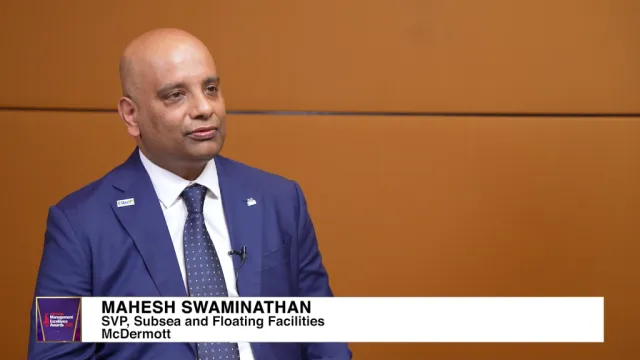
One chat away: Conversational commerce levels the playing field for brands online
Leaving consumers with unanswered queries can result in $2m missed revenue per day.
Fiona Thia, business development director at TMX, was looking for a ring online. She can only roughly estimate her ring size based on the chart posted on the store’s website. Already expecting her order to be hit-or-miss, she then received a message from the brand asking for a photo of her finger to help settle the size and assuring her that, if the item did not fit, she can have it exchanged with no additional payment. Thia also received a follow-up message to check on the item delivered.
In the end, Thia became one of the brand’s satisfied customers. This is conversational commerce at work.
“Conversational commerce focuses on messaging,” Thia told Hongkong Business.
It is a strategy that benefits the brand itself because it enables businesses to control their own sales channel strategy and lower the rates of returns. Thia noted that processing returns are costly and they even have to figure out if the item returned could be shelved or just thrown away.
The adoption of conversational commerce rose in popularity as brands expanded their presence online through social media, such as Facebook and Instagram.
“It's really about capitalising on your own followers. That's the reason why we believe that social commerce is quite an equal playing field for all brands of different sizes and different verticals,” Thia said.
Specific sectors, such as beauty brands, can adopt conversational commerce by relying on messaging applications to sell their products and have live chat advisors to answer queries from customers. Through messaging, customers can send their photos to the brands and have the retail associates on-screen recommend the type of products suitable for them.
For fashion brands, this can also be adopted as some customers could have ordered two sizes at a time, especially when they have no idea about their size, and just have one of them returned as soon as the customers get to fit the items.
The right channel
When opening stores online or in a new channel, Thia said that it is important to have a proper channel strategy, taking into consideration the target audience per channel. She noted that younger customers may be more present via social media, whilst slightly older or more loyal customers might be on the brand’s own marketplace or website.
Data from Sprout Social showed that Gen Z shoppers, or those aged 18 to 40, are the most enthusiastic to make purchases via social media, particularly in Instagram, TikTok, and Whatsapp.
In Hongkong, one of the best channels to run conversational commerce would be WhatsApp, given that it’s the most used app in the market, AnyMind Group’s Deputy Head of E-Commerce Enablement for Japan, Mai Endo, told Hongkong Business.
Based on data from Statista, WhatsApp receives 89,600 monthly downloads, making it the most downloaded free app in the social media category in Hongkong in April 2022.
But for brands present on various platforms, Thia cautioned that they do not “cannibalise” each channel, citing as an example the need for their products to be sold at the same price regardless of the channel.
Botversation alone is a no-no
One of the main purposes of having conversational commerce is to give online consumers the experience they would have in brick-and-mortar stores: having an assistant or staff to guide buyers through their purchase.
Endo, therefore, emphasised the need for both the human and artificial intelligence (AI) elements in conversational commerce.
Leaving consumers to chatbots only will lead to unresolved chats, which, in turn, can result in an average of $2m per day of missed revenue, according to a study by customer experience solutions company, Simplr.ai.
“Chatbots can just recommend a product, but not answer consumers who have doubts on whether they should buy this colour or that colour,” Endo said, adding that as part of their product offering, AnyChat, the company can also provide a customer support person who operates within regular working hours.
Since the platform has yet to have a 24/7 chat support, Endo said operators can instead segment concerns by “tagging,” so the next time a similar inquiry pops up, and there’s no available person to talk to, the chatbot can answer on behalf.
Thia echoed Endo, saying that businesses should have a person managing chats coming through their social media platforms or technology or software that will ensure a seamless shopping experience for customers and for the business for smooth processing of orders.
“You might be getting hundreds of orders, and you don't want a very manual process of doing things noting down the products that are being sold.”
Thia said back-end operations should also be prioritised to ensure that products are available, as well as the fulfilment aspect to secure the delivery of the items, whenever they want it.
“It's really about being able to meet the demands of the consumers, too, because you want to ensure that there is a seamless shopping experience,” Thia added.
Exceptional conversations
According to Simplr.ai, what consumers view as an “exceptional” conversation with brands is if they get a response within 19 seconds of chatting, and being able to talk with them for an average of four minutes.
On the other hand, having consumers wait for 47 seconds after their first chat will already leave them unimpressed.
For those still using email inquiries, Simplr.ai said providing responses which are not automated in or under 15 minutes will get brands far with their customers.
To seal the deal, Endo said it is also good for brands to choose conversational commerce platforms which allow their users to check out.
Conversation to conversion
Exceptional conversations can turn into conversions, and one of Any Mind's clients was proof of that.
According to Endo, a client of theirs in the business of healthcare products saw their revenue grow by five times more after integrating conversational commerce in January.
About 30% of the brand's total revenue also came from chat applications, said Endo.
Apart from customer retention, brands can also utilise conversational commerce to improve their marketing strategies.
“Conversational commerce platforms can also consolidate customer feedback, and also internal conversations on the purchase and interaction histories. By using those histories, we can actually divide the customer's information into some categories and the use of them into the segment targeting when we are sending the promotions or the messages,” Endo said.

















 Advertise
Advertise









